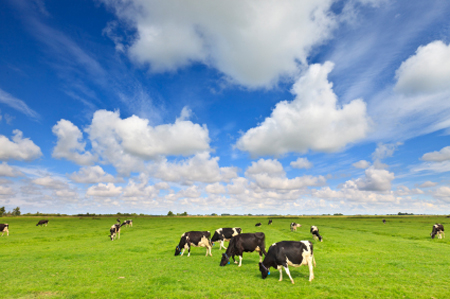Vilsack Wants to Increase U.S. Dairy Exports to Boost Farmers’ Bottom Lines
Category: Dairy
 (American Agriculturist) – Tom Gallagher, CEO of Dairy Management Inc., which manages the national dairy producer checkoff program, and Tom Vilsack, CEO of the U.S. Dairy Export Council and the former USDA secretary, provided a joint overview during a press conference on Wednesday at World Dairy Expo in Madison, Wis., about the future of dairy. Gallagher and Vilsack discussed their respective organizations’ strategy to help increase dairy product sales and consumption on behalf of dairy farmers.
(American Agriculturist) – Tom Gallagher, CEO of Dairy Management Inc., which manages the national dairy producer checkoff program, and Tom Vilsack, CEO of the U.S. Dairy Export Council and the former USDA secretary, provided a joint overview during a press conference on Wednesday at World Dairy Expo in Madison, Wis., about the future of dairy. Gallagher and Vilsack discussed their respective organizations’ strategy to help increase dairy product sales and consumption on behalf of dairy farmers.
Fast-food partnerships key
In 2009, DMI changed its business plan, moving away from television advertising and retail promotions and toward starting partnerships with fast-food restaurants, Gallagher explained. One of its first partnerships was with McDonald’s.
“We have similar relationships with several other companies, including Taco Bell, KFC, Pizza Hut and Domino’s,” Gallagher said. “We created partnerships with McDonald’s and other fast-food restaurants to increase consumption. Consumers in this country are consuming a record amount of cheese per person, and that is a direct result of the dairy checkoff and things we have been doing.”
Vilsack said he believes the future of dairy is bright, acknowledging that milk prices aren’t as strong as they could be or should be.
“The reality is, dairy farmers do an incredibly good job of producing milk,” he said. “We’re going to have to have strong dairy exports. Right now the U.S. represents 5% of the world’s consumers, and that number is expected to shrink to 3% in the coming years. So that means at least 95% of the world’s consumers live outside of the U.S.”
Dairy farms need to export milk
Vilsack said exports play a huge role in making sure dairy farming is sustainable.
“Between 14% and 15% of all dairy production is exported. We can’t sustain 14% to 15%,” Vilsack said. “We need to export 19% to 20% of our dairy production. We want to enhance the amount of dairy products that we export. Our challenge is to find creative ways to build trust in our products and increase markets.”
Vilsack said to help accomplish his goal of increasing dairy exports by 5%, he plans to hire additional people and increase USDEC’s marketing efforts.
How does he plan to accomplish this?
“First of all, we’re not going to ignore our No.1 dairy market in Mexico,” he said. “We are going to partner with universities, and showcase what U.S. dairy can do for retail businesses and restaurants in countries like Mexico. We’re sending the message that we are no longer just content with focusing on the domestic market. We want to be able to work with Mexican families to consider more dairy. The reality is, they drink a lot of soda in Mexico. We think they need to get their children to drink more milk.”
According to Vilsack, there is a tremendous opportunity for the U.S. to increase dairy export markets.
“We are hopeful and confident we will be able to increase these markets, because we have the best dairy farmers in the world.”
Canada is the No. 2 market for U.S. dairy products. Vilsack is hopeful USDEC can work with the Canadian government to open up that market to more U.S. dairy products.
Asian, African populations booming
Vilsack also plans to target Asia.
“In Asia, Japan has an aging population, but they have only 6,200 dairy farmers in Japan,” Vilsack said. “We would like to continue to push for market access and let them know we can be competitive in Japan. Southeast Asia has a lot of young people. We are going to continue to market dairy products there. China has a big market. They have 18 million babies born every year in China. We think there is a great opportunity to sell infant formula there.”
Vilsack said Chinese consumers eat pizza once every 45 days.
“The average American eats pizza once every seven days,” he explained. “Imagine how much more cheese we could sell if we could increase pizza consumption in China.”
Vilsack also wants to increase U.S. dairy consumption in northern Africa.
“We recently lost market share in northern Africa to the European Union,” Vilsack explained. “We think we can get that back. Cheese consumption in northern Africa is 10 times what it is in Southeast Asia, so we see opportunity in northern Africa. One-third of the world population is projected to live in Africa in the next 15 to 20 years.”
Vilsack acknowledged that pulling out of a trade agreement, like the North American Free Trade Agreement — which is in the process of being renegotiated — could impact dairy exports.
“If we sign a trade agreement, that could have an impact as well,” Vilsack said.
Gallagher does not think the checkoff needs to be increased.
“The question is, how can we use the dollars we have most effectively?” he asked.
World Dairy Expo continues through Saturday at the Alliant Energy Center in Madison.




